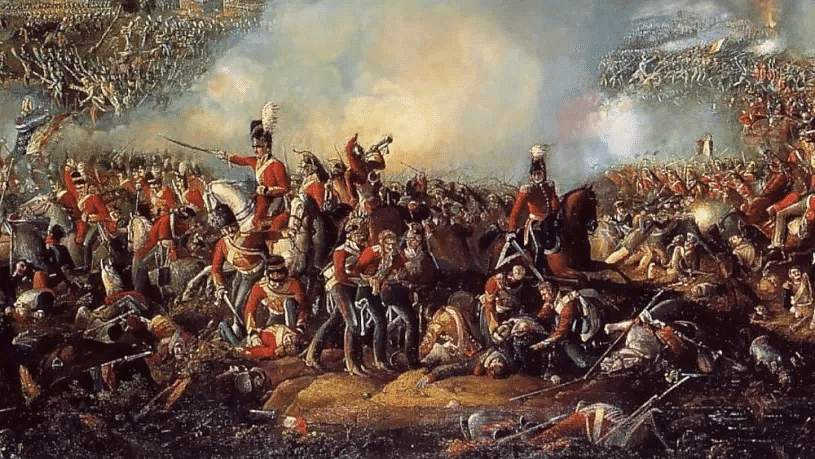From Trade to Territory (The Company Establishes Power) Class 8 Worksheet History Chapter 2
| Table of contents |

|
| Multiple Choice Questions (MCQs) |

|
| Fill in the Blanks |

|
| True/False |

|
| Very Short Answer Questions |

|
Multiple Choice Questions (MCQs)
Q1: Which European powers did the English East India Company have to compete with in the 18th century?
A) Spanish and Dutch
B) French and Dutch
C) Portuguese and Spanish
D) French and Spanish
Q2: What led to the conflicts between the East India Company and the nawabs of Bengal?
A) The Company refused to grant concessions to the nawabs.
B) The Company demanded large tributes from the nawabs.
C) The Company deprived the Bengal government of revenue.
D) The Company stopped the nawabs from extending fortifications.
Q3: Who led the British forces in the Battle of Buxar?

A) Sirajuddaulah
B) Mir Jafar
C) Mir Qasim
D) Hector Munro
Q4: What was the policy of the Doctrine of Lapse introduced by Lord Dalhousie?
A) It declared that Indian rulers could choose their own successors.
B) It stated that if an Indian ruler died without a male heir, his kingdom would become part of Company territory.
C) It allowed Indian rulers to pass on their kingdoms to their daughters.
D) It prohibited the Company from annexing any Indian kingdoms.
Q5: What role did Mir Jafar play in the Battle of Plassey?
A) He led the British forces.
B) He betrayed Sirajuddaulah, aiding the British victory.
C) He fought against the British.
D) He was neutral and did not participate in the battle.
Q6: How did the East India Company secure its trading privileges in Bengal initially?
A) By defeating the French and Portuguese in naval battles.
B) Through diplomatic negotiations with the Mughal emperor.
C) By bribing local officials to obtain the zamindari rights over three villages.
D) By winning the favor of the British Crown to override local Indian authorities.
Fill in the Blanks
Q1: The East India Company was granted a royal charter in the year __________, giving it the sole right to trade with the East.
Q2: The Battle of __________ marked a significant victory for the East India Company and led to the establishment of puppet rulers in Bengal.
Q3: Warren Hastings played a crucial role in expanding Company power and was the Governor-General from __________ to __________.
Q4: The __________, a policy implemented by Lord Dalhousie, stated that a kingdom would revert to Company control if a ruler died without a male heir.
Q5: After the defeat of Tipu Sultan, Mysore was placed under the rule of the __________ dynasty.
True/False
Q1: The English East India Company initially came to India solely for military conquest.
Q2: The Company's transition from trade to territory involved direct military confrontations as well as diplomatic maneuvers.
Q3: The Doctrine of Lapse was used by the Company to annex territories like Nagpur and Jhansi.
Q4: All Indian rulers were hostile towards the East India Company and resisted any form of alliance.
Q5: The Company used the revenue from Bengal to fund its military expenditures and other costs within India.
 |
Download the notes
Worksheet: From Trade to Territory (The Company Establishes Power)
|
Download as PDF |
Very Short Answer Questions
Q1: Whom did the Company install in place of Mir Jafar and why?
Q2: Who was called tiger of Mysore?
Q3: When did the company take over Awadh?
Q4: Name Sirajuddaulah’s commander who never fought the Battle of Plassey.
Q5: What was the prime objective of East India Company?
Q6: Why did the Battle of Plassey become famous?
Q7: Who was the ruler of England in 1600?
Q8: Who was the last of the powerful Mughal rulers?
Q9: Who became the Nawab of Bengal after Alivardi khan?
Q10: Who was made the Nawab of Bengal after the Battle of Plassey?
Q11: Who discovered the sea route to India?
Q12: Which governor general was impeached by British Parliament?
You can find Worksheets Solutions here: Worksheet Solutions: From Trade to Territory (The Company Establishes Power)
|
66 videos|428 docs|46 tests
|
FAQs on From Trade to Territory (The Company Establishes Power) Class 8 Worksheet History Chapter 2
| 1. What was the role of trade in the establishment of the company's power? |  |
| 2. How did the company expand its territorial control? |  |
| 3. What were the reasons for the company's shift from trade to territorial control? |  |
| 4. How did the company maintain its power over the territories it acquired? |  |
| 5. What were the consequences of the company's territorial expansion? |  |





















